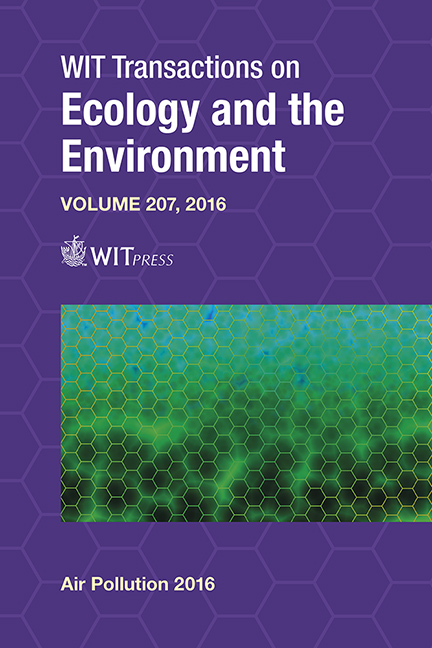Diesel Emissions From Euro II/III Buses Of Bogota’s Urban Transport System: The Challenge Is Not Reducing Mass, But Counting Particles
Price
Free (open access)
Transaction
Volume
207
Pages
12
Page Range
157 - 168
Published
2016
Size
896 kb
Paper DOI
10.2495/AIR160151
Copyright
WIT Press
Author(s)
M. C. Cortes, H. R. Acevedo, N. Y. Rojas
Abstract
Bogota’s public transportation system has had dramatic changes in the last decade, but its fleet of 12,000 diesel buses is still one the main sources of fine particulate matter, affecting the health of its nearly 8 million inhabitants. Perhaps the most significant factor that explains the toxicity of particulate matter is particle number, rather than particulate mass. Therefore, developing strategies to reduce diesel engine particulate number emissions, and not only their mass, is one of the main purposes of Bogota’s environmental agency. Currently nanoparticle studies developed by Bogota’s environmental agency shows that the interval of 1.72 x 105 – 2.22 x 105 p cm−3 is the concentration in particle number inside the public transportation system’s buses one of the main ways of the city.
This work aimed to measure particle number emissions from Euro II and Euro III buses under different load conditions on a chassis dynamometer. The buses operate with diesel B2/B4 fuel with 50 mg/kg of sulfur (ASTM D-2622) and 0.01 g/100 g (ASTM D482) of ash. Two 50-passenger and four 160-passenger buses, the Euro II and Euro III, were tested. Particle counting and particle size distribution were determined using a NanoMet3 diffusion counter.
Mass size distributions showed the same trend as number size distribution, but shifted in a proportion equal to the mass median diameter over median diameter count. Regardless of the engine’s emission standard, most of the particle sizes were in the nucleation mode.
Keywords
aerosol, diesel emission, engine, particle matter, particulate count, nanoparticles





